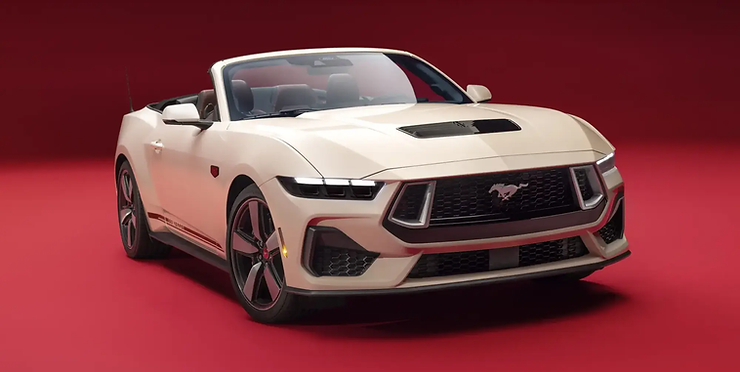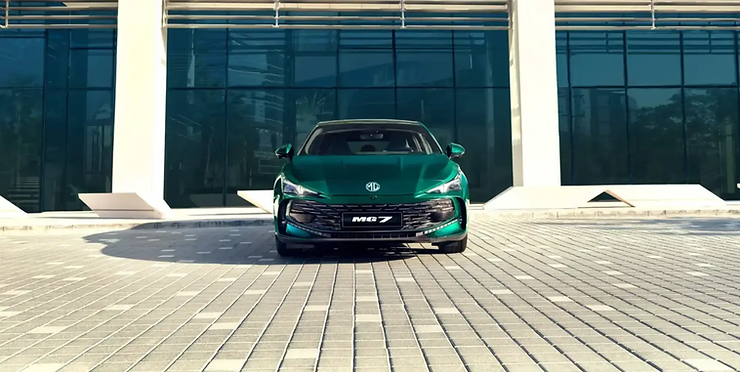**Titular:** *Next-Gen Ford Everest Elevates Safety Tech*
**Intro:**
Combining off-road resilience with urban adaptability, the Next-Gen Ford Everest debuts cutting-edge driver-assist systems and reinforced safety frameworks. From trailer-aware BLIS to adaptive cruise control and a front far-side airbag, Ford engineers prioritized occupant protection and collision avoidance. Stefan Seemann highlights its mission: “the safest Everest ever,” blending robust chassis upgrades with AI-driven safety innovations.
**Factbox (50w):**
Next-Gen Everest integrates 10 driver-assist technologies, including BLIS with trailer coverage (up to 10m), adaptive cruise control with stop & go, and Pre-Collision Assist. Features six airbags, including a front far-side airbag, plus post-collision braking. Active Park Assist and Evasive Steer Aid enhance maneuverability and accident prevention.
**Next-Gen Ford Everest: Elevating Safety and Innovation for Adventurers and Urban Explorers**
The Next-Gen Ford Everest redefines safety and driving confidence, blending rugged off-road capability with cutting-edge technologies designed to protect drivers, passengers, and others on the road. Whether navigating city streets or untamed trails, Ford’s latest SUV integrates a comprehensive suite of driver assist systems and safety innovations, ensuring peace of mind for families and adventurers alike.
### A Commitment to Safety: Insights from Ford’s Engineering Team
Stefan Seemann, Driver Assistance Technology Engineer at Ford International Markets Group, underscores the Everest’s mission: *“Our goal was to make this Everest the safest we’ve ever created. We focused on technologies that actively prevent accidents while enhancing driver control in every scenario.”* This vision is realized through advanced systems that address both everyday commutes and extreme driving challenges.
—
### **Advanced Driver Assist Technologies: Redefining Confidence Behind the Wheel**
The Next-Gen Everest’s technologies are engineered to reduce stress, improve awareness, and intervene when necessary. Here’s a breakdown of its standout features:
1. **BLIS with Cross-Traffic Alert and Trailer Coverage**
– **Blind Spot Monitoring Enhanced:** Sensors in the taillights detect vehicles or trailers in adjacent lanes, even when towing. Customizable for trailers up to 2.4m wide and 10m long, the system alerts drivers to blind-spot risks during lane changes.
2. **Integrated Electric Trailer Brake Controller**
– **Seamless Towing Control:** Built into the dashboard and vehicle software, this system auto-adjusts trailer braking force based on the Everest’s speed and brake pressure. Drivers can manually override settings for precise control.
3. **Reverse Brake Assist (Object Detection)**
– **Collision Prevention in Reverse:** Detects stationary obstacles, pedestrians, or cyclists behind the vehicle. Alerts the driver with visual/audio cues and automatically brakes if no action is taken.
4. **Adaptive Cruise Control with Stop & Go + Lane Centering**
– **Stress-Free Highway Driving:** Maintains a set speed and distance from vehicles ahead, even in stop-and-go traffic. Lane Centering uses cameras to keep the Everest aligned within its lane.
5. **Lane-Keeping System with Road Edge Detection**
– **Off-Road Safety Net:** Monitors unpaved road edges up to 50m ahead at speeds above 65 km/h. Gently steers the vehicle away from soft shoulders or ditches to prevent unintentional drifting.
6. **Pre-Collision Assist with Intersection Support**
– **Emergency Braking for Crossroads:** Uses cameras and radar to detect collisions with vehicles, cyclists, or pedestrians—even at intersections. Pre-charges brakes and applies full stopping power if the driver doesn’t react.
7. **Evasive Steer Assist (ESA)**
– **Avoidance Maneuvers Made Easier:** Works with radar and cameras to calculate steering inputs needed to dodge collisions. Activates when braking alone is insufficient, guiding drivers around obstacles.
8. **Reverse Brake Assist (Parking Support)**
– **Parking Peace of Mind:** Provides warnings and automatic braking during reverse maneuvers to prevent collisions with nearby objects or vehicles.
9. **Active Park Assist 2.0**
– **Hands-Free Parking:** Identifies parallel or perpendicular spaces via ultrasonic sensors. Handles steering, acceleration, and braking while the driver monitors surroundings.
10. **Post-Collision Braking**
– **Secondary Impact Protection:** Automatically applies moderate braking after a collision to reduce the risk of additional accidents.
—
### **Occupant Protection: Fortifying Safety Inside the Cabin**
Beyond collision prevention, the Everest prioritizes occupant safety with:
– **Load-Limiting Pretensioners:** Adjust seatbelt tension during impacts to reduce injury risk (applies to driver, front passenger, and second-row seats).
– **Six Airbag System:** Includes dual front, driver knee, side-curtain (all three rows), and a **front far-side airbag** between seats for enhanced side-impact protection.
—
### **The Everest’s Safety Legacy: Built for Every Journey**
As Stefan Seemann notes, *“From its chassis upgrades to intelligent sensors, every detail was crafted to minimize risks.”* The Next-Gen Everest’s combination of structural durability and proactive technologies sets a new benchmark for SUVs, ensuring drivers can tackle both urban grids and remote trails with unmatched confidence.
**Stay Connected with Ford News**
For updates on the Next-Gen Everest’s availability and evolving technologies in your region, follow Ford’s official channels. Explore smarter, safer adventures—wherever the road takes you.
—
*[Optional CTA: Embed a video link or dealership locator button for WordPress integration.]*
**FAQs: Next-Gen Ford Everest Safety & Driver Assist Technologies**
1. **How does BLIS with Cross-Traffic Alert enhance safety when towing a trailer?**
BLIS extends coverage to trailers up to 10 meters long and 2.4 meters wide, using taillight sensors to detect vehicles in blind spots during lane changes, improving safety while towing.
2. **What trailer dimensions are compatible with the Next-Gen Everest’s BLIS system?**
The system supports trailers up to 2.4 meters wide and 10 meters long, automatically adjusting detection for safer maneuvering.
3. **How does the Integrated Electric Trailer Brake Controller improve towing control?**
It integrates with the vehicle’s computer, offering precise braking based on the Everest’s brake pressure and allowing manual override for smoother, safer trailer braking.
4. **What does Reverse Brake Assist detect, and how does it intervene?**
It identifies stationary objects, pedestrians, or cyclists behind the vehicle, issuing warnings and automatically braking if the driver doesn’t respond in time.
5. **How does Adaptive Cruise Control with Stop and Go reduce driving stress?**
It maintains a preset speed and distance from vehicles ahead, even bringing the Everest to a full stop in traffic, resuming automatically when safe.
6. **What is the purpose of the Lane-Keeping System with Road Edge Detection?**
It uses a wide-view camera to monitor rural road edges, providing steering support at speeds above 65 km/h to prevent drifting onto soft verges or gravel.
7. **How does Pre-Collision Assist with Intersection mitigate collision risks?**
It detects vehicles, pedestrians, or cyclists via camera, alerts the driver, pre-charges brakes, and autonomously brakes if a collision is imminent.
8. **How does Evasive Steer Assist (ESA) complement braking systems?**
ESA uses radar and cameras to provide steering support if braking alone can’t avoid a collision, helping steer around obstacles safely.
9. **What parking scenarios does Active Park Assist simplify?**
It autonomously handles steering, acceleration, and braking for parallel or perpendicular parking, with driver override via brakes or button disengagement.
10. **How does Post-Collision Braking reduce secondary collision risks?**
After an initial collision, it applies moderate brake pressure to minimize vehicle movement, lowering the chance of further impacts.
11. **How many airbags does the Next-Gen Everest have, and where are they located?**
It includes six airbags: dual front, driver knee, side curtains for all rows, and a front far-side airbag between the seats.
12. **Why is the front far-side airbag significant?**
Positioned between front seats, it adds protection during side impacts, reducing injury risk for front passengers.
13. **At what speed does the Lane-Keeping System activate?**
The system engages at speeds starting at 65 km/h, ideal for rural roads with unpaved edges.
14. **Can drivers manually adjust the Integrated Electric Trailer Brake Controller?**
Yes, drivers can override the system manually to tailor trailer braking force as needed.
15. **How does the Next-Gen Everest’s safety framework surpass previous models?**
It combines a reinforced chassis, advanced driver aids (e.g., ESA, BLIS), and structural enhancements for improved crash protection and collision avoidance.
**CTA (Llamado a la Acción):**
¿Listo para experimentar la seguridad y tecnología de vanguardia del Next-Gen Ford Everest? **Visita tu concesionario Ford más cercano** para descubrir cómo estas innovaciones pueden transformar tus aventuras y viajes diarios. ¡No esperes más para llevar la confianza y protección al siguiente nivel! **Solicita una prueba de manecho hoy** y sé parte de la evolución de la conducción inteligente.
**Conclusión:**
El Next-Gen Ford Everest no solo redefine los estándares de seguridad en vehículos todoterreno, sino que también demuestra cómo la tecnología puede convertirse en un aliado indispensable para conductores y familias. Con sistemas de asistencia al conductor que anticipan riesgos, protegen a los ocupantes y simplifican maniobras complejas, este SUV está diseñado para inspirar confianza en cada kilómetro. Desde carreteras rurales hasta el bullicio urbano, el Everest combina robustez, ingeniería avanzada y un compromiso inquebrantable con la seguridad, posicionándose como la elección inteligente para quienes buscan explorar sin límites.
**Agradecimiento:**
¡Gracias por acompañarnos en este recorrido por las innovaciones del Next-Gen Ford Everest! En Ford, tu seguridad y la de tus seres queridos es nuestra prioridad. Síguenos en **Ford News** para mantenerte actualizado sobre las últimas tecnologías, lanzamientos y novedades disponibles en tu región. ¿Tienes preguntas o deseas conocer más detalles? ¡No dudes en contactarnos! Estamos aquí para ayudarte a encontrar el vehículo que se adapte a tu estilo de vida. 🚗💨
—
*Esperamos que cada viaje contigo sea seguro, emocionante y lleno de posibilidades.*





